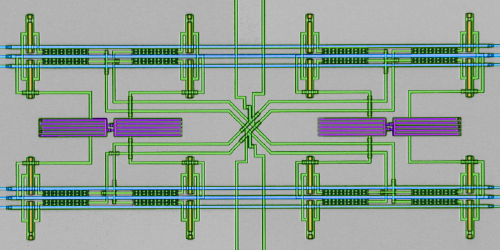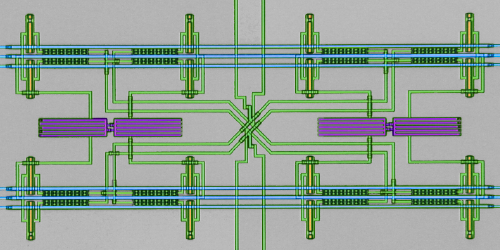Quantum Circulators Simplified
The superconducting qubit is a leading candidate for building a quantum computer. So far, however, quantum circuits with only a small number of such qubits have been demonstrated. As researchers scale up the qubit number, they need devices that can route the microwave signals with which these qubits communicate. Benjamin J. Chapman at JILA, the University of Colorado, and the National Institute of Standards and Technology, all in Boulder, Colorado, and co-workers have designed, built, and tested a compact on-chip microwave circulator that could be integrated into large qubit architectures.
Circulators are multiple-port devices that transmit signals directionally—a signal entering from port will exit from port . This property can be used to shield qubits from stray microwave fields, which could perturb the qubits’ coherence. The device’s directional, or nonreciprocal, behavior requires a symmetry-breaking mechanism. Commercial circulators exploit the nonreciprocal polarization rotation of microwave signals in a permanent magnet’s field, but they are too bulky for large-scale quantum computing applications. Newly demonstrated circulators, based on the nonreciprocity of the quantum Hall effect, can be integrated on chips (see Synopsis: Quantum Circulator on a Chip) but require tesla-scale magnetic fields to operate or initialize them.
The team’s chip-based scheme can instead be operated with very small magnetic fields (10–100 μT). Inside the device, simple circuits shift the signals in frequency and time, in a sequence that is different for each input port. These noncommutative temporal and spectral shifts provide the symmetry-breaking mechanism that gives the device its directionality. Experimental tests prove that the circulator works at high speed and with minimal losses, while an analysis of the device’s noise performance indicates that up to 1000 of these circulators could in principle be integrated in a single-superconducting-qubit setup.
This research is published in Physical Review X.
–Matteo Rini
Matteo Rini is the Deputy Editor of Physics.





